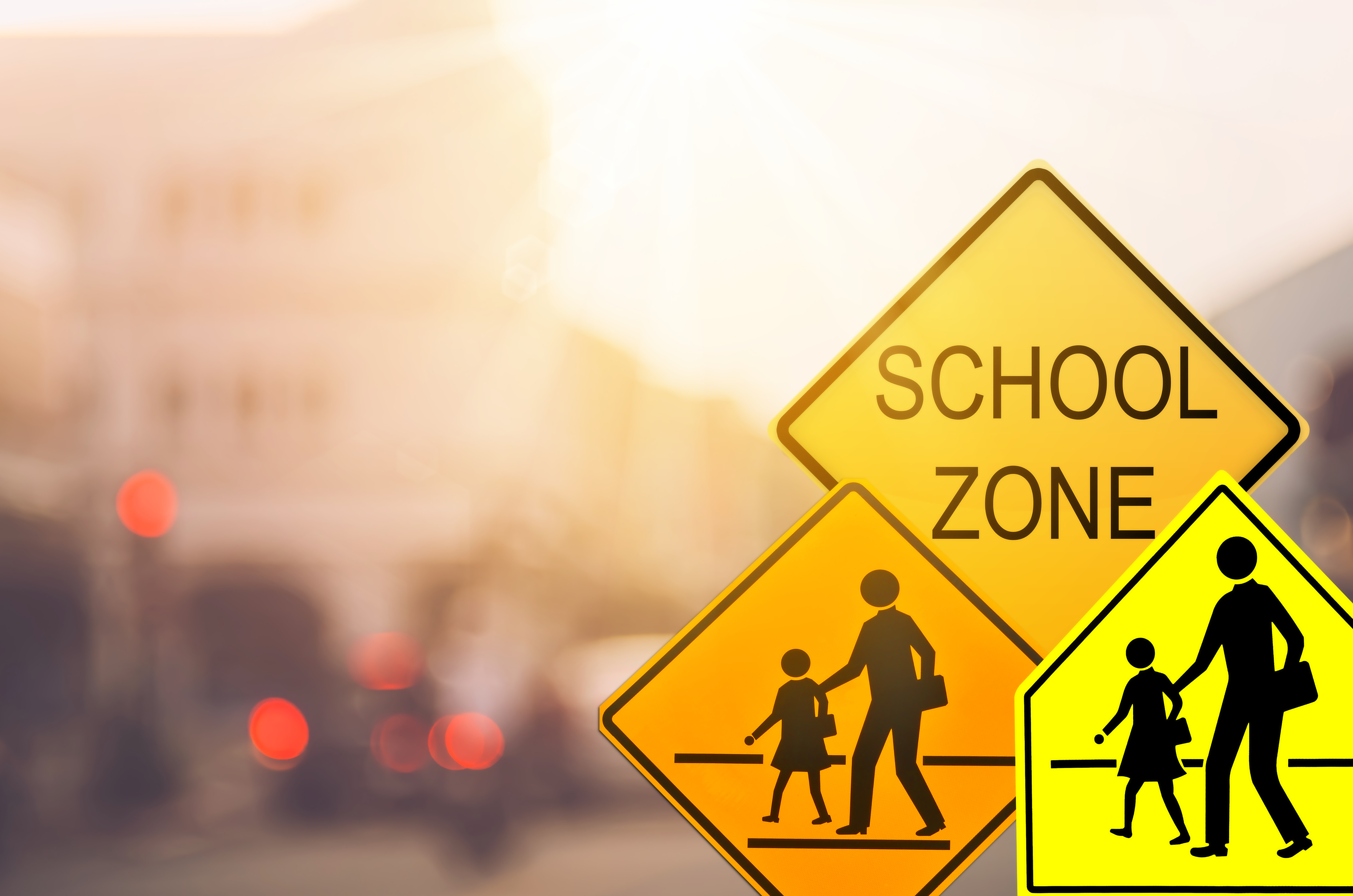
School buses are the safest way for children to get to school. Still, children are especially vulnerable as they get on and off the bus. In Maryland, bus safety laws are in place to help drivers safely navigate the roads where children might be crossing.
Maryland School Bus Laws
Though school buses are designed to prioritize safety, children are vulnerable when waiting for, boarding or leaving the bus. The 10-foot area extending from each side of the bus is considered a danger zone for children, so laws are intended to keep all cars away whenever children will be in that area. When a school bus prepares to stop for children, it will alert drivers via flashing yellow lights. Drivers should use extreme caution, slowing with the bus and preparing to stop, as children may enter the roadway unexpectedly. Once the bus is stopped, it will extend a stop signal, or stop-arm, and the flashing lights will change to red — requiring all drivers to stop no closer than 20 feet from the bus. During this period, children will be getting on or off the bus. Drivers must come to a complete stop if any of the following are true:
- A driver is traveling the same direction as the school bus. This is true whether the road has one lane, multiple lanes, or a central turning lane.
- A driver is traveling in the opposite direction and the road does NOT have a dirt, grass, or barrier median. In other words, if there is no physical median, you must stop even if the bus is on the other side of the road. (Note: In some states, you must stop for school buses even on a divided highway.)
Remember, drivers must stop at least 20 feet from the bus, regardless of which direction they’re approaching. They must not attempt to pass by the bus until the stop signal and flashing lights are off and the bus is in motion once again. Violation of these laws incurs a $250 fine if caught on camera, and up to $570 and a three-point penalty on a driver’s license if stopped by a police officer.
Safety Tips for Drivers
- Remain alert while driving. If you are distracted by your phone or other things within or outside the vehicle, you could miss seeing a child in the roadway, or miss seeing the stopped school bus with its lights flashing.
- If you’re behind a school bus that is slowing to a stop, do not try to pass it before it puts out its signal to avoid the wait. You could strike a child who is running to catch the bus.
- Remember that children often move in a way that is unexpected, and they may not know where to look for traffic. You know the rules of the road; often they do not.
- When backing out of a driveway or leaving a garage, be especially mindful of children walking or biking to school.
- Never assume children see or hear your car, or that they’re aware you’re approaching. If you see them, give them the right of way.
- Watch carefully for children waiting or playing at the bus stop. They may enter the roadway accidentally.
- If you live in a neighborhood near a school, watch out for children who are walking or biking to or from school.
Keeping Children Safe
As a parent or caregiver, teach children these basic safety tips to help them avoid getting hurt on the way to or from school.
- Be on time. Children are in danger of being injured if they are running for the bus because they think they’ll miss it. Try to be at the stop at least five minutes before scheduled pick-up.
- Keep a safe distance from the road. Teach children not to sit, stand or play on the curb while waiting for the bus. Show them a safe spot at least five giant steps away from the bus stop where they should wait.
- Stay out of the danger zone. Explain to them that standing or walking too close to the bus will make it difficult for the bus driver or other drivers to see them.
- Wait for the driver’s signal. Teach children to line up when the bus arrives. They should wait until the door opens and the driver signals them to get on before approaching the bus.
- Board one at a time. Teach children to enter the bus single file.
- Exit one at a time. Children may need reminders to slow down, use the handrail and exit the bus single file so nobody gets hurt. That’s especially important when it’s the end of the day and they’re excited to get home.
- Look both ways before getting off the bus. Teach kids to watch for cars when they exit any vehicle, including a school bus. Once they exit, they should walk directly to the sidewalk and out of the danger zone.
- Cross the street carefully. Before crossing the street, children should be aware to take five giant steps out from the front of the bus if there is no crossing arm and make sure you can see the face of any driver. They should wait for the driver to signal that it’s safe to cross, and look left-right-left when coming to the edge of the bus to make sure traffic is stopped. It’s also important to keep watching traffic when crossing.
- Never walk behind the bus. Be sure children know to cross the street in front of the bus, never behind it.
- Tell the driver if you drop something. Teach children never to bend down in front of (or near) a bus if they drop something. The bus driver might not see them.
- Always use crosswalks and traffic signals when available. Children should always use crossing guards, crosswalks and other helpful traffic controls to get home safely when those resources are available.
